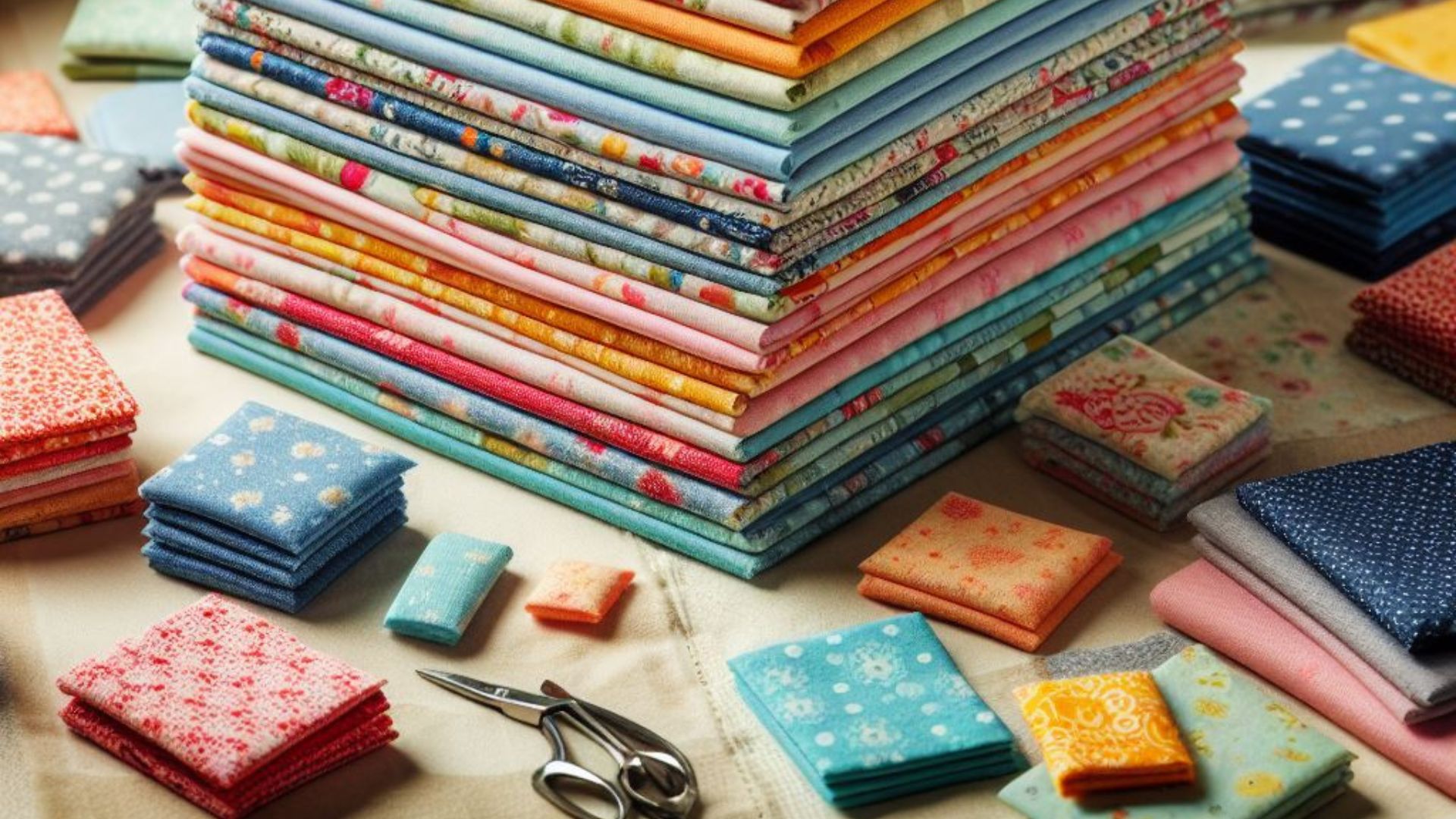Quilting is an art that beautifully weaves together creativity and precision. Whether you’re a seasoned quilter or just starting, the process of basting is crucial to ensure your quilt layers stay in place while you work your magic.
Let’s dive into the best ways to baste a quilt and achieve those flawlessly aligned stitches!
Understanding Basting
Before we delve into techniques, let’s grasp the essence of basting. Basting essentially holds the quilt top, batting, and backing together before you start quilting. It prevents shifting and puckering, allowing for a smooth and professional finish.
Materials You’ll Need
Gather your supplies: safety pins, basting spray or fabric glue, curved safety pins or straight pins, and a spacious area to lay out your quilt.
Techniques for Basting
Spray Basting: This method involves using a temporary adhesive spray to hold the layers together. Lay the backing fabric on a flat surface, smooth it out, then layer the batting on top. Spray a thin layer of basting spray on the batting and carefully place the quilt top over it, smoothing out any wrinkles as you go.

Pin Basting: With safety pins or curved basting pins, start from the center of your quilt and work outward, securing all three layers together. Use a large, open area to spread out your quilt, ensuring even tension across the layers.
Thread Basting: An alternative method involves using large basting stitches with a needle and thread. Create long stitches to hold the layers together, removing them as you quilt.
Tips for a Smooth Basting Process
- Smooth, Flat Surface: Work on a clean and flat surface to prevent wrinkles or folds in your quilt layers.
- Start Center-Out: Begin basting from the center and work your way towards the edges, ensuring even tension and minimal wrinkles.
- Avoid Over-Basting: Use the basting method that suits your comfort and style without overdoing it. Too many pins or excessive spray can make quilting cumbersome.
External Resources for Further Insight:
- The Spruce Crafts – Guide to Basting a Quilt
- National Quilters Circle – Tips for Perfectly Basted Quilts
- Craftsy – Basting Basics for Quilting
So,…
Mastering the art of basting is integral to creating a stunning quilt. Experiment with different methods to find what works best for you and your quilting project. Remember, a well-basted quilt sets the stage for flawless stitching and a beautifully finished masterpiece.
Choosing the Right Method for Your Quilt
Now that we’ve covered the basics, let’s delve deeper into each basting technique to help you decide which suits your style and project best.
Spray Basting: Easy and Efficient
Why It’s Great:
- Quick Application: Spray basting is a swift way to secure your layers without spending too much time on pinning.
- Smooth Results: It often results in a smoother surface, ensuring minimal wrinkles.
Tips for Success:
- Ventilation is Key: Ensure good airflow or work in a well-ventilated area when using basting spray.
- Moderation is Crucial: Apply the spray lightly; too much adhesive can make the quilt stiff.
Pin Basting: Traditional and Reliable
Why It’s Great:
- Versatility: You have more control over the tension and placement of the layers with pins.
- Reusable: Pins can be reused for multiple projects, making them a cost-effective choice.
Tips for Success:
- Distribute Evenly: Space the pins or basting stitches at regular intervals to avoid bunching.
- Mindful Placement: Be mindful of pin placement, ensuring they won’t interfere with your quilting path.
Thread Basting: Classic and Adjustable
Why It’s Great:
- Adjustable: Easy to remove as you quilt, allowing for adjustments without leaving residue.
- Handy for Large Quilts: Ideal for larger projects where maneuvering a spray or pins might be challenging.
Tips for Success:
- Loose Stitches: Keep the stitches loose enough for easy removal without damaging the fabric.
- Regular Removal: Remove basting stitches as you quilt to avoid tangling or interference.
Moving forward
Each basting method offers its unique advantages, catering to different preferences and projects. Experimentation often helps find the perfect fit for your quilting journey. Remember, the goal of basting is to secure the layers, allowing you to quilt smoothly and bring your creative vision to life.
Explore the provided external resources for in-depth tutorials and additional insights into mastering the art of basting. Your quilting adventure awaits, so dive in and enjoy the process of creating something truly special.
Troubleshooting Common Basting Issues
As with any art form, mastering quilt basting comes with practice and patience. Here are solutions to common issues you might encounter during the basting process:
Wrinkles and Bunching
Solution: Before basting, ensure each layer is smooth and wrinkle-free. Smooth out the layers regularly as you baste, and adjust tension if needed. If using spray basting, apply in small sections and smooth out gradually.
Over-Basting or Insufficient Securing
Solution: Strike a balance between too much and too little. For pins, ensure they’re placed at regular intervals without overcrowding. With spray basting, apply a thin, even layer to avoid stiffness.
Unwanted Residue or Stickiness
Solution: When using basting spray, protect the surrounding area with a drop cloth or newspapers. Clean any overspray promptly with a fabric-safe cleaner to prevent stickiness.
Uneven Tension Across Layers
Solution: Start basting from the center and work towards the edges, ensuring equal tension throughout. Smooth out any wrinkles or folds as you baste to maintain consistent tension.
Basting, a Gateway to Flawless Quilting
Mastering the art of basting is fundamental in creating a beautifully crafted quilt. Whether you prefer the ease of spray, the tradition of pins, or the adjustability of thread basting, each method offers its unique advantages.
Remember, practice makes perfect! Don’t be discouraged by initial challenges. Experiment with different techniques and find what works best for your comfort and project needs.
Utilize the provided external resources for comprehensive guidance and expert tips. Embrace the journey of quilting, and revel in the satisfaction of creating something truly exceptional.
Comparison tabular
| Basting Method | Advantages | Considerations |
|---|---|---|
| Spray Basting | Quick application | Requires well-ventilated area |
| Smoother surface | Apply lightly to avoid stiffness | |
| Protect surrounding area from overspray | ||
| Pin Basting | Versatile and controllable | Evenly space pins for uniform tension |
| Reusable and cost-effective | Mind placement to avoid quilting interference | |
| Remove pins as you progress with quilting | ||
| Thread Basting | Adjustable and easy removal | Keep stitches loose for easy removal |
| Handy for larger projects | Regularly remove stitches as you quilt to prevent interference |
Each method offers distinct benefits, so choosing the right one depends on your preferences, project size, and comfort level. Experimentation often helps in finding the perfect fit for your quilting journey.
Wrapping up
Quilting, a beautiful blend of artistry and precision, finds its foundation in the crucial process of basting. From spray to pins to thread, each basting method holds its unique charm, offering you a gateway to flawlessly stitched quilts.
Remember, there’s no one-size-fits-all approach. Embrace experimentation, find what resonates with your style, and tailor it to suit your project’s needs. Be patient with yourself; mastery comes with practice.
Utilize the provided external resources for comprehensive guidance and expert insights. Let your creativity flow as you embark on this quilting adventure. Cherish the process, revel in the stitches, and delight in the masterpiece you’re creating stitch by stitch.
Happy quilting, and may your quilts be a testament to your creativity and dedication!

For over a decade, I’ve been Mike, an artist, crafter, and designer deeply immersed in the Croc world. I thrive on crafting unique, size-inclusive patterns, fostering creativity, and sharing them on ktforum.com. My designs aim to ignite your creative spark and delight you, ensuring clarity and ease of use through rigorous testing. Join me in expressing your creative flair and showcasing your craft with joy.
Related Posts
- Creating Even Stitches in Your Quilt: A Comprehensive Guide
Quilting is an art form that involves precision, creativity, and attention to detail. One crucial…
- A Guide to Attaching Quilt Blocks Together: Creating Your Perfect Quilt
Quilting is a beautiful craft that allows you to weave together fabric, creativity, and warmth.…
- The Perfect Size for Your Lap Quilt: A Guide for Cozy Creations
Quilting is an art form that intertwines creativity and comfort. Whether you're a seasoned quilter…
- The Beginner's Guide to Easy Quilt Patterns
Quilting is an art that weaves together creativity, fabric, and patience to create beautiful, functional…

